Computer Network Topology Outline
The first thing that has to study about a network is its physical shape or design layout. It will be extremely important when a wiring scheme and design are selected for a new network installation. Actually Network Topology refers to physical shape or design layout of a network. Network topology determines how different nodes in a network are connected and how these nodes communicate to each other.

Types of Computer Network Topology
Network really has two shapes or two types of topology.
- Physical topology
- Logical topology
Physical Topologies
The physical topology is the physical shape or layout of the wires that can be visible in a network. The Physical topology defines how devices are interconnected with or without wires. Physical topology is further divided into two sections.
- Point-to-point connections
- Multipoint connections
Point-to-point connections
In a point-to-point connection, a communication link is established between two devices with one wire or air (in the case of wireless). A simple example of point-to- point connection is talking over telephone between two persons where anyone else is not allowed to use the phone on either side.
Multipoint Connection
Multiple devices or machines are involved in a multipoint connection. These devices mainly share cabling but each device needs to have a unique number to identify each other for sending data between them. A good example of a multipoint connection is communication between a group of computers in a network.
Logical Topology
A logical topology defines how devices communicate with each other across the physical topology. The physical and logical topologies are independent of each other. The physical topology refers to the physical layout of the wires where the logical topology refers to how data moves through the network. There are five types of logical topology that are used in a network.
- Star topology
- Hierarchical topology
- Bus topology
- Mesh topology
- Ring topology
Star Topology
Star topology is the most popular network topology that is used in many business and home networks today. A star topology is established with a central connection point called a hub node. The hub may be an actual hub device or a network switch or a network router. Network devices generally connect to the hub with Unshielded Twisted Pair (UTP) Ethernet cables also known as RJ45 cables. The main benefit of a star network is that failure in any start network cable will only take down one computer’s network access but not the entire LAN. However, if the hub node fails, the entire network will be down in a start network.
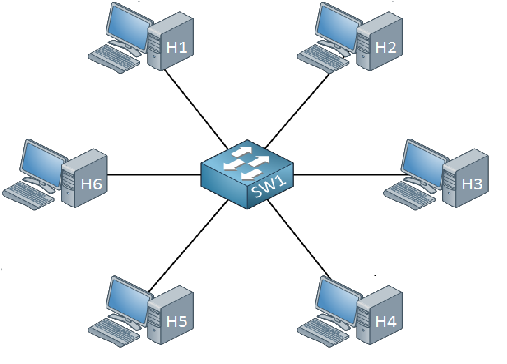
Hierarchical Topology
The hierarchical topology is also known as tree topology. In a tree topology, a central ‘root’ node (top level of the hierarchy) is connected to one or more other nodes that are one level lower in the hierarchy with a point-to-point physical link. The second level node may also have connected to one or more other nodes that are one level down in the hierarchy with another point-to-point link. The top level node i.e root node is the only node that has no other node above it in the hierarchy.
Multiple star networks can be connected with tree network where each hub node of a star network functions as the node of a tree network.
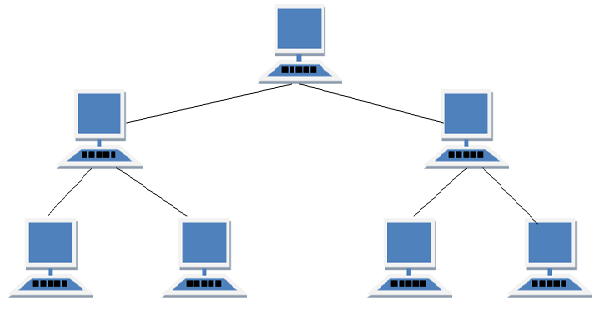
Bus Topology
In a bus network, a common backbone is connected to all network devices. The high capacity bus backbone (generally a single cable) functions as a shared communications medium and it joins networks and central devices. If any network device wants to communicate with another network device within a bus network, the device sends a broadcast message onto the backbone. All other devices will see the broadcast message but only the desired recipient will accepts and process the message.
The performance of a bus network will be visual negatively if more than few dozen computers are connected to this network. In addition, failure of the backbone cable will damage the whole network.
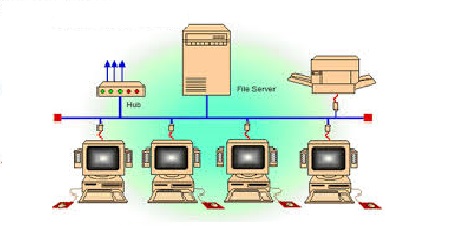
Mesh Topology
In a mesh network, every network device is connected to every other network device with a point-to-point connection. This topology is mostly used in WAN and wireless networks. The route concept is introduced by mesh topology and this topology is used by routers to determine the best path. Mesh network also provides physical link redundancy in the event of a link failure. As each device is connected to all other devices in a mesh network, this topology is the most expensive and difficult to maintain.
Two types of mesh topology are possible. If every device is connected to all other devices, it is called full mesh. On the other hand, partial mesh also possible where some devices are connected to only indirectly to others.
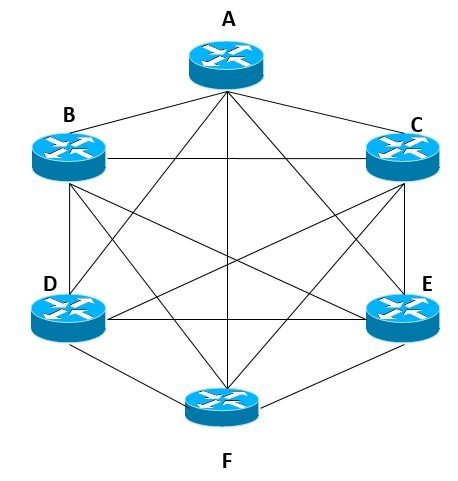
Ring Topology
In a ring network, every network device is connected to two neighbor devices with a point-to-point connection for communication purpose. All devices in a ring network make a loop. If any cable or device is fail, the loop will break and also break down the entire ring network. In the ring network, messages travel through the loop in the same direction (effectively either clockwise or counterclockwise). FDDI, SONET or Token Ring technology is used to implement a ring network. A Token is passed from one computer to another which enables each computer to have equal access to the network.
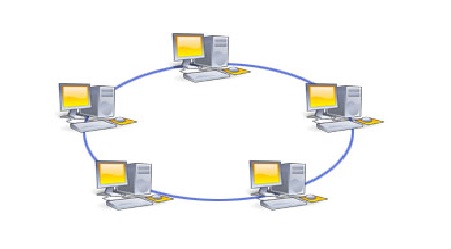
Network topology plays an important role in computer network design theory. You can probably build a small network without having better knowledge on the network topology but if you have better understanding, you will be able to understand basic networking concept like network broadcasting, switching and routing.
Why not a Cup of COFFEE if the solution?

